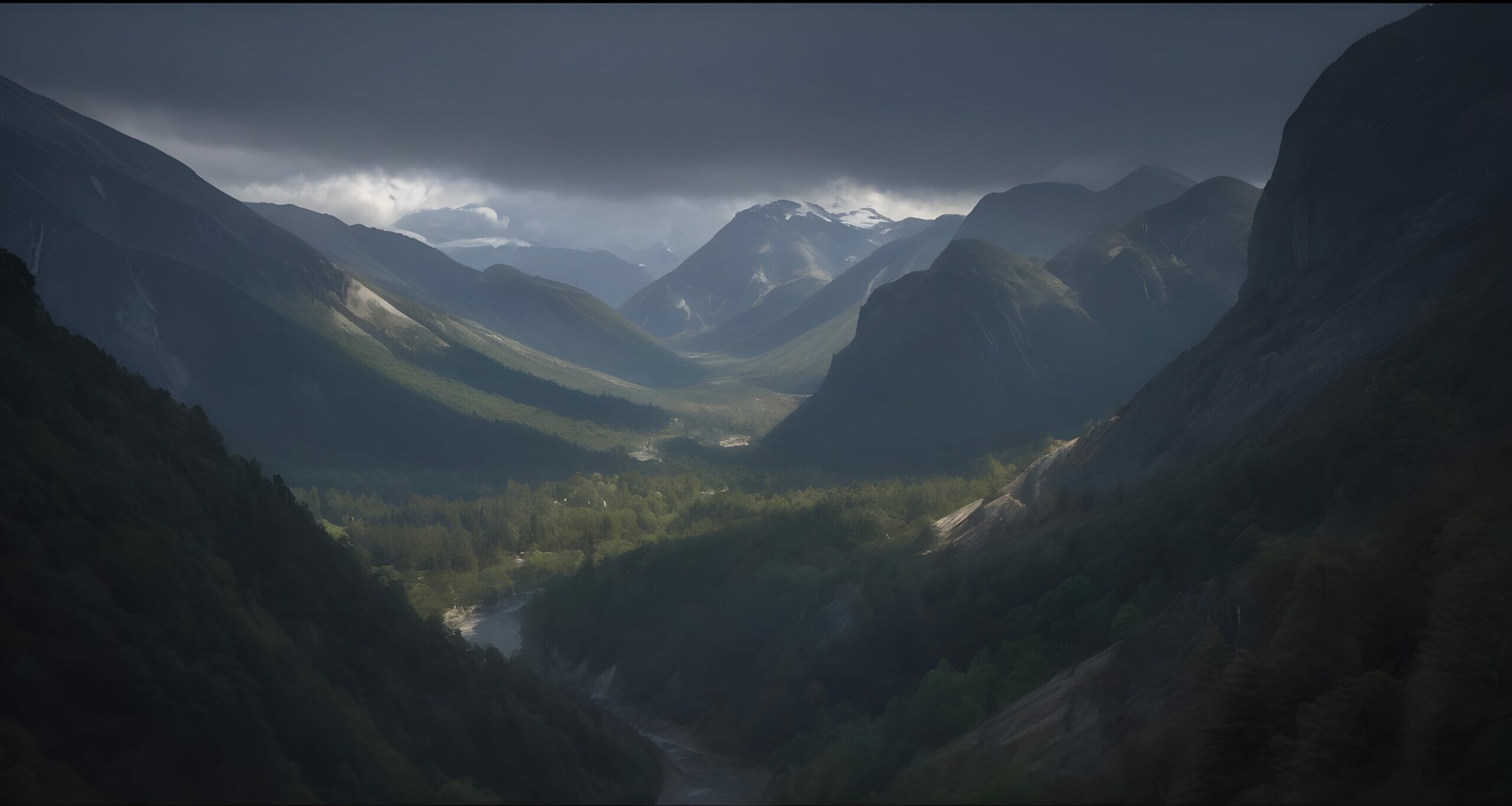The Amazon rainforest, aptly described as the “lungs of the Earth,” stands as one of the most awe-inspiring and biodiverse regions on our planet. Spanning an impressive expanse of approximately 5.5 million square kilometers across nine South American countries, the Amazon encapsulates a rich tapestry of life within its dense foliage and labyrinthine waterways. Within this expansive ecosystem, a symphony of flora and fauna thrives, from majestic canopy trees that reach towards the heavens to the myriad of elusive creatures that call this verdant paradise their home. As we delve into the depths of the Amazon, we uncover a treasure trove of biodiversity that not only captivates the imagination but also serves as a vital cog in maintaining ecological equilibrium on a global scale.
The Amazon: A Biodiversity Hotspot
The Amazon rainforest is home to an astonishing array of plant and animal species, making it one of the most biodiverse regions on Earth. It is estimated that the Amazon is home to approximately 10% of the world’s known species, with new species being discovered regularly. From towering hardwood trees to delicate orchids, the Amazon is a botanist’s paradise, boasting an incredible diversity of plant life.
The canopy of the Amazon rainforest is dominated by towering trees that form a dense green canopy, blocking out much of the sunlight and creating a unique microclimate beneath. Beneath the canopy, a diverse understory of shrubs, ferns, and vines thrives in the dimly lit forest floor, while epiphytic plants cling to the trunks and branches of trees, absorbing moisture and nutrients from the air. The Amazon is also home to a wide variety of palm trees, which play a vital role in the ecology of the forest.
In addition to its rich plant life, the Amazon rainforest is also home to an incredible diversity of animal species. From jaguars and tapirs to sloths and monkeys, the Amazon is teeming with life at every turn. It is estimated that the Amazon is home to approximately 427 mammals, 1,300 birds, 378 reptiles, and more than 400 amphibians, as well as countless insect species. Many of these species are found nowhere else on Earth, making the Amazon rainforest a truly unique and irreplaceable ecosystem.
Preserving Biodiversity for Ecological Balance
The Amazon rainforest stands as a testament to the extraordinary diversity of life on Earth, earning its reputation as a biodiversity hotspot of unparalleled significance. Spanning across an expansive territory, it is a sanctuary for an astonishing array of plant and animal species, making it one of the most biodiverse regions on the planet. Within its verdant embrace, the Amazon shelters approximately 10% of the world’s known species, a staggering testament to the richness of life that thrives within its borders. With each passing day, scientists continue to uncover new species, underscoring the Amazon’s status as a cradle of evolution and discovery.
At the heart of this ecological marvel lies the majestic canopy, a verdant expanse of towering trees that stretches as far as the eye can see. These giants of the forest form a dense green canopy that blankets the landscape, filtering sunlight and creating a unique microclimate beneath. Here, amidst the shade and shelter of the canopy, a diverse understory of shrubs, ferns, and vines flourishes, each species carving out its niche in the intricate web of life. Epiphytic plants, such as orchids and bromeliads, cling to the trunks and branches of trees, their delicate forms adding to the tapestry of biodiversity that defines the Amazon.
Palm trees, too, are an integral part of the Amazon’s botanical diversity, their graceful fronds swaying in the gentle breeze. From the towering moriche palms to the diminutive açaí, these iconic trees play a vital role in the ecology of the forest, providing food, shelter, and sustenance to a myriad of species.
But it is not just the flora of the Amazon that astounds; the fauna that call this vast wilderness home are equally diverse and captivating. Jaguars, with their sleek coats and piercing eyes, stalk silently through the underbrush, while tapirs graze peacefully amidst the foliage. High above, troops of monkeys swing effortlessly through the trees, their playful antics echoing through the canopy. Sloths, with their languid movements and enigmatic smiles, cling to branches, blending seamlessly into their arboreal habitat.
The Amazon is home to an astonishing array of wildlife, including approximately 427 mammal species, 1,300 bird species, 378 reptile species, and more than 400 amphibian species. From the elusive pink river dolphins that ply the waters of the Amazon River to the iridescent butterflies that flit through the forest, the Amazon teems with life at every turn. Many of these species are endemic to the region, found nowhere else on Earth, underscoring the irreplaceable value of this unique ecosystem.
In conclusion, the Amazon rainforest stands as a beacon of biodiversity, a testament to the resilience and adaptability of life on Earth. As we continue to unravel the mysteries of this vast wilderness, it is imperative that we recognize the importance of preserving and protecting it for future generations. Only by working together can we ensure that the Amazon remains a thriving ecosystem, a testament to the beauty and wonder of the natural world.
Challenges and Threats
The Amazon rainforest, often hailed as a bastion of biodiversity, is now confronting an array of formidable challenges and threats that jeopardize its very existence. Among these adversities, deforestation looms as a paramount concern, propelled by the relentless expansion of agriculture, logging operations, and infrastructural development. The unrelenting march of deforestation poses a dire risk to the Amazon’s intricate web of life, as swathes of forest are razed to make way for agricultural land and urban settlements. This rampant destruction of habitat not only diminishes the Amazon’s rich biodiversity but also amplifies the specter of species extinction, as countless plants and animals lose their homes and sanctuaries.
Adding to the peril is the scourge of illegal logging, mining, and poaching, which further compound the pressures exerted on the fragile ecosystem of the Amazon. Illegal activities, driven by profit and exploitation, ravage the forest with impunity, decimating precious habitats and driving vulnerable species to the brink of oblivion. The wanton exploitation of the Amazon’s resources not only undermines efforts to conserve its biodiversity but also perpetuates a cycle of environmental degradation that threatens to irrevocably alter the landscape of this invaluable wilderness.
Moreover, the looming specter of climate change casts a dark shadow over the Amazon, exacerbating the threats already faced by this fragile ecosystem. Shifts in temperature and precipitation patterns, exacerbated by global warming, are altering the delicate balance of the Amazon, disrupting the intricate relationships between its myriad inhabitants. Rising temperatures and erratic rainfall regimes are triggering changes in the distribution and abundance of plant and animal species, reshaping the very fabric of the forest and imperiling its resilience in the face of environmental upheaval.
The consequences of climate change are further compounded by the escalating frequency and severity of extreme weather events, such as droughts, floods, and wildfires. These cataclysmic events wreak havoc on the Amazon, inflicting untold damage on its delicate ecosystems and exacerbating the challenges already faced by its beleaguered inhabitants. The increasing prevalence of wildfires, in particular, poses a grave threat to the Amazon’s biodiversity, as vast swathes of forest are consumed by flames, leaving devastation in their wake.
In the face of these mounting challenges and threats, urgent action is needed to safeguard the future of the Amazon rainforest. Efforts to combat deforestation, mitigate the impacts of climate change, and combat illegal activities must be redoubled, with governments, conservation organizations, and local communities working together to protect this invaluable natural treasure. By taking decisive action to address the root causes of these threats and protect the Amazon’s fragile ecosystems, we can ensure that this irreplaceable wilderness remains a beacon of biodiversity for generations to come.
Conservation Efforts
In the face of mounting challenges, there exists a glimmer of hope for the future of the Amazon rainforest, as concerted efforts led by conservation organizations, governments, and indigenous communities strive to preserve its unparalleled biodiversity and safeguard its ecological integrity. Despite the daunting task at hand, a myriad of initiatives are underway, each aimed at mitigating the threats posed to this vital ecosystem and fostering a future in which the Amazon thrives.
Foremost among these initiatives are the establishment of protected areas and the implementation of sustainable land use practices. Protected areas, such as national parks and reserves, serve as invaluable sanctuaries for the Amazon’s rich biodiversity, providing refuge for countless plant and animal species. By safeguarding key habitats from the encroachment of deforestation and other destructive activities, these protected areas play a crucial role in preserving the ecological balance of the Amazon. Additionally, sustainable land use practices, such as agroforestry and selective logging, offer a viable alternative to destructive practices, allowing communities to meet their needs while simultaneously protecting the integrity of the forest.
Furthermore, community-led conservation efforts are proving to be instrumental in the fight to preserve the Amazon rainforest. Indigenous communities, who have long been stewards of the land, are at the forefront of these efforts, drawing upon their traditional knowledge and intimate connection to the forest to implement sustainable management practices and protect their ancestral territories. By empowering these communities to take an active role in conservation, we not only strengthen the resilience of the Amazon but also uphold the rights and traditions of those who call it home.
However, the conservation of the Amazon rainforest requires more than just localized efforts; it demands international collaboration and support. By mobilizing resources and expertise on a global scale, we can address the complex challenges facing the Amazon and implement holistic solutions that prioritize both conservation and sustainable development. International partnerships, funding mechanisms, and multilateral agreements are essential tools in this endeavor, enabling us to tackle issues such as deforestation, illegal logging, and climate change in a coordinated and effective manner.
Investing in conservation and sustainable development initiatives is not only a moral imperative but also a wise investment in the future of our planet. By protecting the Amazon’s incredible biodiversity, we not only safeguard the health of this vital ecosystem but also secure the myriad benefits it provides to humanity, from carbon sequestration and climate regulation to the provision of clean water and essential ecosystem services.
While the challenges facing the Amazon rainforest are daunting, there is reason for optimism. Through concerted action and collaboration, we can ensure that this invaluable natural treasure continues to thrive for generations to come, serving as a beacon of biodiversity and a testament to the resilience of the natural world.
In conclusion, the Amazon rainforest stands as a global treasure of immeasurable significance, revered for its unparalleled biodiversity and revered for its intrinsic role in sustaining life on Earth. Spanning vast expanses across nine South American countries, this majestic wilderness harbors an astonishing array of plant and animal species, many of which are found nowhere else on the planet. From the towering canopy trees that dominate the landscape to the myriad of elusive creatures that inhabit its depths, the Amazon captivates the imagination and inspires awe in all who behold its splendor.
Yet, the importance of the Amazon extends far beyond its sheer beauty and diversity. As the “lungs of the Earth,” the Amazon plays a vital role in regulating the global climate, absorbing vast amounts of carbon dioxide and releasing oxygen into the atmosphere. Its dense vegetation acts as a carbon sink, helping to mitigate the effects of climate change and stabilize the Earth’s climate system. Additionally, the Amazon is a vital source of freshwater, providing sustenance to millions of people and supporting countless ecosystems throughout South America.
However, despite its immense value and ecological significance, the Amazon rainforest is facing an array of formidable threats. Rampant deforestation, driven by agriculture, logging, and infrastructure development, poses a grave risk to the Amazon’s biodiversity, leading to habitat loss and species extinction. Illegal activities such as logging, mining, and poaching further exacerbate these pressures, pushing vulnerable species to the brink of oblivion.
Climate change, too, looms large as a significant threat to the Amazon rainforest, altering temperature and rainfall patterns and increasing the frequency and severity of extreme weather events. Rising temperatures and changing precipitation regimes are causing shifts in the distribution and abundance of plant and animal species, disrupting the delicate balance of the forest and threatening its resilience in the face of environmental upheaval.
Despite these challenges, there is hope for the future of the Amazon rainforest. Conservation organizations, governments, and indigenous communities are working tirelessly to protect its biodiversity and preserve its ecological integrity. Through initiatives such as protected areas, sustainable land use practices, and community-led conservation efforts, we can safeguard key habitats and restore degraded ecosystems. Moreover, international collaboration and support are essential for addressing the complex challenges facing the Amazon, ensuring that its incredible biodiversity continues to thrive for generations to come.
In preserving the biodiversity of the Amazon rainforest, we not only protect one of the Earth’s most precious natural treasures but also secure a brighter future for all. By recognizing the importance of the Amazon and taking decisive action to conserve and protect it, we can ensure that this invaluable wilderness remains a beacon of biodiversity and a testament to the resilience of the natural world.










More Stories
Beyond the Plate: The Environmental, Economic, and Social Impact of Global Food Waste
Balancing Act: Aquaculture’s Impact on Biodiversity Conservation
Onions: Trends and Opportunities in the Global Market